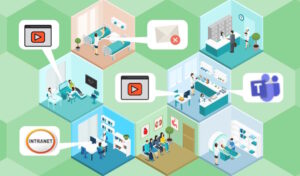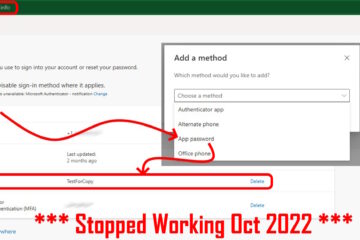In the healthcare industry, effective communication is of utmost importance for positive patient outcomes and for ensuring that healthcare organizations run smoothly and efficiently. The unique structures and diverse nature of the healthcare workforce present significant challenges for internal communication within this sector. This article delves into the importance of communication in healthcare settings and highlights the challenges faced. Furthermore, it provides insights into tools and strategies that can be utilized to improve internal communication within healthcare organizations.
The Importance of Communication in Healthcare Settings
The importance of communication in healthcare is Effective and efficient communication plays a critical role in the healthcare industry. It is necessary for informing and engaging employees, as well as ensuring the overall success of healthcare organizations. There are several fundamental reasons why communication should be a priority in this sector:
- Compliance: Healthcare employees need to keep pace with various federal and state regulations that apply to the industry. Effective communication ensures that employees are informed about these regulations.
- Stay Informed: In a constantly evolving industry, healthcare employees need to stay up-to-date with key developments, such as disease outbreaks, policy changes, and new initiatives. Timely and accurate communication is essential for this purpose.
- Avoid Rumors and Misinformation: Lack of effective communication can lead to the circulation of rumors or misinformation within the organization. This can negatively impact employee morale and external reputation, especially when disgruntled staff members spread rumors outside the organization.
- Capability for Life-or-Death Situations: In healthcare, poor communication can result in mistakes that have life-and-death consequences for patients. The importance of communication in hospitals cannot be stressed enough when it comes to ensuring patient safety and well-being.
- Clarity and Expectations: Effective communication helps employees understand their roles, responsibilities, and what is expected of them within the organization. This clarity contributes to a more efficient and productive healthcare workforce.
- Engagement and Motivation: Communication is vital for fostering employee engagement. The healthcare sector often faces challenges when it comes to employee engagement levels, and prioritizing communication can help drive up engagement and improve overall organizational culture.
- Training Opportunities: Communication ensures that employees are aware of new training opportunities available to them, which in turn enhances their skills and knowledge.
- Emergency Response: In times of crisis, effective communication is crucial to reach employees quickly and ensure an appropriate and efficient response. The ability to communicate urgent information can have a significant impact on patient safety and organizational resilience.
- Efficiency and Collaboration: Improved communication within healthcare organizations leads to increased efficiency, productivity, and collaboration among employees. This ultimately results in better patient outcomes and higher-quality healthcare delivery.
- Patient-Centric Approach: Prioritizing communication as part of a patient-centric approach enhances understanding, engagement, and the overall quality of care. It fosters trust, ensures clarity in treatment plans, and encourages patient involvement in decision-making processes.
Challenges for Internal Communication in Healthcare
While the importance of effective communication in healthcare settings is undeniable, there are several challenges that need to be overcome. Some of these challenges include:
- Complexities of the Healthcare Workforce: Healthcare organizations consist of employees in various roles, working different hours (including night shifts), and often spread out across multiple locations. Communicating effectively with such a diverse workforce can be challenging.
- Chaotic Nature of Healthcare: The busy and demanding nature of healthcare work can make it difficult to reach employees and ensure their attention is focused on important communication efforts.
- Non-Traditional Work Environment: Many healthcare employees do not work in traditional office settings with their own desks and computers. This poses additional challenges when it comes to communicating with them effectively.
- Outdated Communication Systems: Despite advancements in technology, some healthcare organizations still rely on outdated communication systems such as pagers and fax machines. This can hinder effective communication and information flow within the organization.
- Remote Work: The COVID-19 pandemic has forced many healthcare organizations to transition to remote work. This shift introduces the challenge of effectively communicating with employees who were traditionally on-site but now work remotely.
- Cybersecurity Awareness: The healthcare industry has been a prime target for cyberattacks, particularly ransomware. Ensuring employee awareness around cybersecurity risks is crucial for protecting patient data and maintaining a secure communication environment.
- Rapidly Changing Situations: Healthcare organizations need to keep employees informed about rapidly changing situations, especially during outbreaks or emergency events. However, ensuring timely and accurate communication in such circumstances can be challenging.
- Complexity of Information: Healthcare information can be complex and technical. Distilling this information in a way that is easily understandable and actionable is crucial to ensure effective communication and avoid confusion.
Tools to Improve Internal Communications in Healthcare Organizations
Given the unique challenges faced by healthcare organizations, adopting a one-size-fits-all approach to communication is ineffective. Utilizing a variety of tools and strategies can significantly enhance internal communication within healthcare settings. Some of these tools include:
- Emails: Email communication can be used strategically and sparingly to avoid email fatigue. However, it is important to recognize that not all employees have access to or regularly check their emails due to the nature of their work.
- Employee Newsletters: Regular newsletters can be an effective way to share important information electronically without overwhelming employees with multiple emails.
- Team Meetings: Conducting regular team meetings allows for direct communication with employees and helps keep them informed and engaged.
- Intranet: Utilizing the organization’s intranet can provide a centralized platform for posting important information. However, it is crucial to ensure that the intranet is well-organized and easily navigable to avoid information overload.
- Noticeboards: Bulletin boards placed in staff areas can serve as a traditional but effective means of communication, especially for employees who do not work from a traditional desk.
In addition to traditional methods, leveraging digital tools can enhance internal communication within healthcare organizations.
Some of these tools include:
- Blogs: Creating blog posts on the organization’s intranet allows employees to share valuable information and insights.
- Videos: Creating videos that employees can access at any time helps bridge communication gaps caused by shift work, ensuring important information reaches all staff members.
- Pop-up Alerts: Sending time-sensitive messages directly to employees’ desktops bypasses the need for checking emails and is particularly useful for shared computers in hospital wards.
- Desktop Tickers: Utilizing scrolling text along the bottom of computer screens ensures that non-time-sensitive information reaches employees with computer access.
- Digital Signage: Transforming screens within the organization into digital billboards allows for engaging and visually compelling information campaigns targeted at employees.
- Employee Apps: Leveraging smartphones and other devices, employee apps can send notifications regardless of employee location or work schedule, keeping everyone informed.
- Corporate Wallpaper, Screensavers, and Lock Screens: Utilizing unused screen space on employees’ computers to disseminate important corporate information.
- Instant Surveys, Polls, and Quizzes: Using digital platforms for quick feedback and communication between employees and management.
- Interactive Training Modules: Providing online training modules that employees can take at their convenience, eliminating the need for everyone to gather in a physical training room.
- Instant Messengers: Enabling quick communication and collaboration between employees through instant messaging platforms, reducing dependence on email and promoting efficient information exchange.
Tips for Communicating Effectively in Healthcare
To ensure effective communication within healthcare organizations, consider implementing the following tips:
- Management Support: Internal communication relies on the support of organizational leaders. Ensure that management is committed to fostering effective communication practices.
- Minimize Noise: Avoid overwhelming employees with excessive information. Deliver important messages in a timely and concise manner, avoiding unnecessary “noise.”
- Targeted Communication: Tailor communication efforts to the specific audience. Not all information needs to be sent to every employee. Send relevant information to specific individuals or departments to avoid message overload.
- Embrace Technology: Embrace new technologies that can enhance communication efficiency and effectiveness within the organization. Stay updated with advancements in healthcare communication systems.
- Training and Education: Provide training and education to employees regarding communication best practices, including cybersecurity awareness and effective information sharing.
Conclusion
Effective communication is vital within healthcare organizations for various reasons, including compliance, employee engagement, patient safety, and collaboration. Despite the challenges presented by the unique nature of the healthcare industry, utilizing a combination of traditional and digital communication tools can significantly improve internal communication within healthcare settings. By prioritizing and investing in effective communication strategies, healthcare organizations can enhance patient outcomes, improve overall efficiency, and create a positive working environment for healthcare professionals.




0 Comments